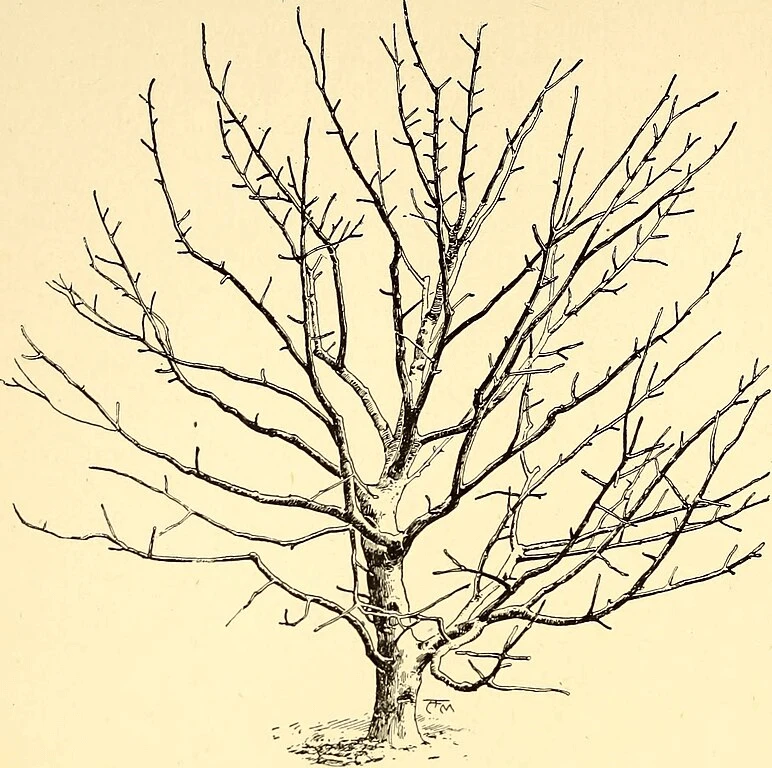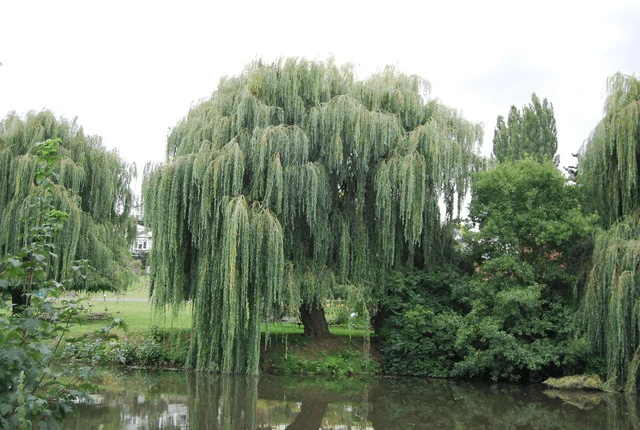Genetic mutation that makes apple trees grow like weeping willows could make laborers’ lives easier
Genetic mutation that makes apple trees grow like weeping willows could make laborers’ lives easier


For more than a century, growers have tied down apple branches when trees are young, in order to improve crop productivity. More research is needed to understand the mechanism for why branch bending improves yields, but studies have shown that the practice helps apple trees allocate more resources such as carbon and other nutrients toward reproductive growth (flowering and fruiting) than toward vegetative growth (branches and leaves).
In rare cases, trees are known to naturally grow downwards.
The new study, published early release on July 3 in the journal Plant Physiology, identified a variation, or allele, of MdLAZY1A – a gene that largely controls weeping growth in apple.
“The findings presented in this paper could be used to make existing apple cultivars grow somewhat downwards and/or with more spreading branches, so they can be more productive, and it can save on labor costs of tying branches down,” said senior author Kenong Xu, associate professor in the School of Integrative Plant Science Horticulture Section at Cornell AgriTech in the College of Agriculture and Life Sciences.
The mutation is rare, occurring in less than 1% of trees.

Now that the mutation – a single nucleotide substitution to the MdLAZY1A gene – has been identified, plant geneticists might use CRISPR/Cas-9 gene editing technology to develop cultivars with weeping-like growth, Xu said.
“We confirmed it through multiple transgenic studies,” Xu said. “We put that allele in a standard royal gala apple cultivar and the tree grew downward.”

To identify the gene, the researchers used a “forward genetics” approach, where they looked at the observable traits in more than 1,000 offspring of weeping cultivars, and separated those that exhibited weeping vs. normal growth. They then used advanced genetic sequencing techniques to compare the two populations to locate the genetic determinant.

 | Videos | More... |

Video: Nuclear energy will destroy us? Global warming is an existential threat? Chemicals are massacring bees? Donate to the Green Industrial Complex!
 | Bees & Pollinators | More... |

GLP podcast: Science journalism is a mess. Here’s how to fix it

Mosquito massacre: Can we safely tackle malaria with a CRISPR gene drive?

Are we facing an ‘Insect Apocalypse’ caused by ‘intensive, industrial’ farming and agricultural chemicals? The media say yes; Science says ‘no’
 | Infographics | More... |

Infographic: Global regulatory and health research agencies on whether glyphosate causes cancer
 | GMO FAQs | More... |

Why is there controversy over GMO foods but not GMO drugs?

How are GMOs labeled around the world?

How does genetic engineering differ from conventional breeding?
 | GLP Profiles | More... |

Alex Jones: Right-wing conspiracy theorist stokes fear of GMOs, pesticides to sell ‘health supplements’




 Viewpoint — Fact checking MAHA mythmakers: How wellness influencers and RFK, Jr. undermine American science and health
Viewpoint — Fact checking MAHA mythmakers: How wellness influencers and RFK, Jr. undermine American science and health Viewpoint: Video — Big Solar is gobbling up productive agricultural land and hurting farmers yet providing little energy or sustainabilty gains
Viewpoint: Video — Big Solar is gobbling up productive agricultural land and hurting farmers yet providing little energy or sustainabilty gains Fighting deforestation with CO2: Biotechnology breakthrough creates sustainable palm oil alternative for cosmetics
Fighting deforestation with CO2: Biotechnology breakthrough creates sustainable palm oil alternative for cosmetics Trust issues: What happens when therapists use ChatGPT?
Trust issues: What happens when therapists use ChatGPT? California, Washington, Oregon forge immunization alliance to safeguard vaccine access against federal undermining
California, Washington, Oregon forge immunization alliance to safeguard vaccine access against federal undermining 30-year-old tomato line shows genetic resistance to devastating virus
30-year-old tomato line shows genetic resistance to devastating virus The free-range chicken dilemma: Better for birds, but with substantial costs
The free-range chicken dilemma: Better for birds, but with substantial costs ‘You have to treat the brain first’: Rethinking chronic pain with Sanjay Gupta
‘You have to treat the brain first’: Rethinking chronic pain with Sanjay Gupta
